In his first project as a football coach, Nuri Şahin is in charge of the Turkish league side Antalyaspor, which currently is in 13th place, counting 10 victories, six draws and 14 defeats in the league.
In a difficult season and despite some bad results, the former Real Madrid player is continuously trying to implement his offensive football tactics in which playing in possession represents their main weapon to attack.
They are a very intense team, especially with their pressing which we’ll develop further.
In this Nuri Şahin tactical analysis, we’ll do an overview of Antalyaspor’s five main moments in a football match: offensive and defensive organisation, offensive and defensive transition and set pieces.
Nuri Şahin Preferred Formations

In a general mode, Antalyaspor present themselves in a 4-2-3-1.
However, as we going to see further, there are several changes to this model.
They feel more comfortable playing in a 3-4-3 in possession, while defensively alternating between a 4-2-4 or 4-2-3-1 when high pressing and in a 4-4-2 if the offenders had built up successfully.
Preferential three-men build-up and respective dynamics
Normally, in the offensive organisation, Nuri Şahin’s side is formed in a 3-4-3, or when the fullbacks are really deep, in a 3-2-5.
Preferentially, they like to build up with three players, more specifically the two centre-backs and one of the defensive midfielders, usually Fernando.
The 31-year-old Brazilian is one of the most tactical and technical players in this team, and as it goes, he can be a substantial contribution to the build-up.
Of course, there have also been cases where Fernando is too far away, and one of the fullbacks had to intervene in the build-up.
Whenever Fernando descends between the centre-backs, the right-back projects himself on the pitch and is always wide open looking to attack the depth, especially when the ball is uncovered.
The left-back, as we are going to detail further in this article, plays as an inverted fullback.
However, the fullbacks can slightly drop on the field if the ball carrier is the centre-back on their flank.
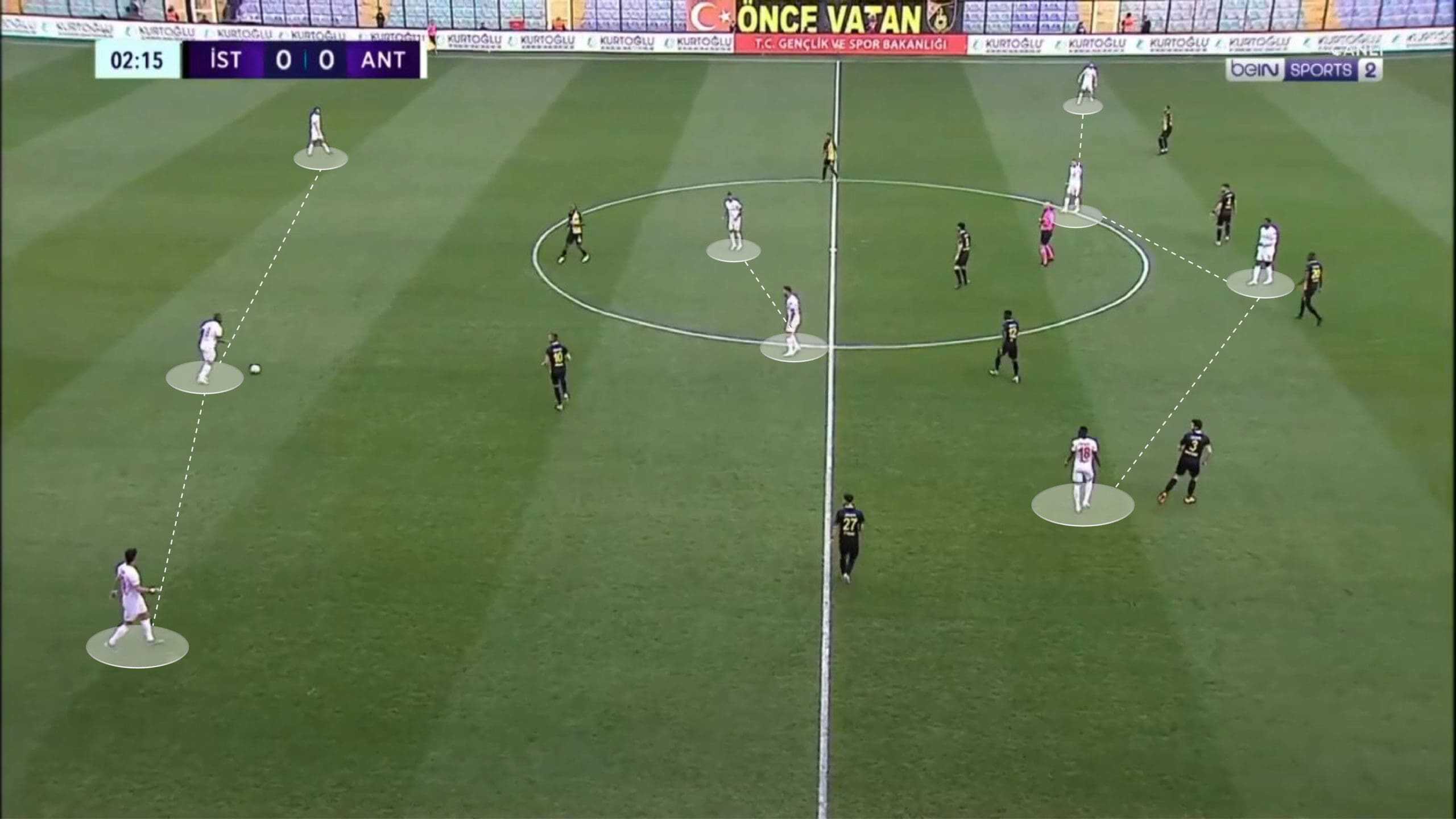
Ahead of the defensive line plays Ufuk Akyol, a very positional midfielder who is intelligent in looking for free space in order to make the midfield-attack connection.
Now, still during the three-men build-up, the player that plays next and slightly ahead of Akyol shifts between the left back (position occupied more recently by Guray Vural) and the offensive midfielder (Sam Larsson).
In fact, both Larson and Vural seemed to understand each other’s positioning and the zones were well occupied.
In other words, if the Swede was more advanced on the pitch, Vural generally explored the space right ahead of Akyol.
Similarly to Mikel Arteta‘s Arsenal, whenever Vural plays as an inverted fullback, the left winger (Sinik) covers offensively the whole left flank and Larsson explores the spaces between the lines.
With this kind of positioning of the left back, we think that Nuri Şahin tactics were related to the prevention of the opposition’s counterattacks.
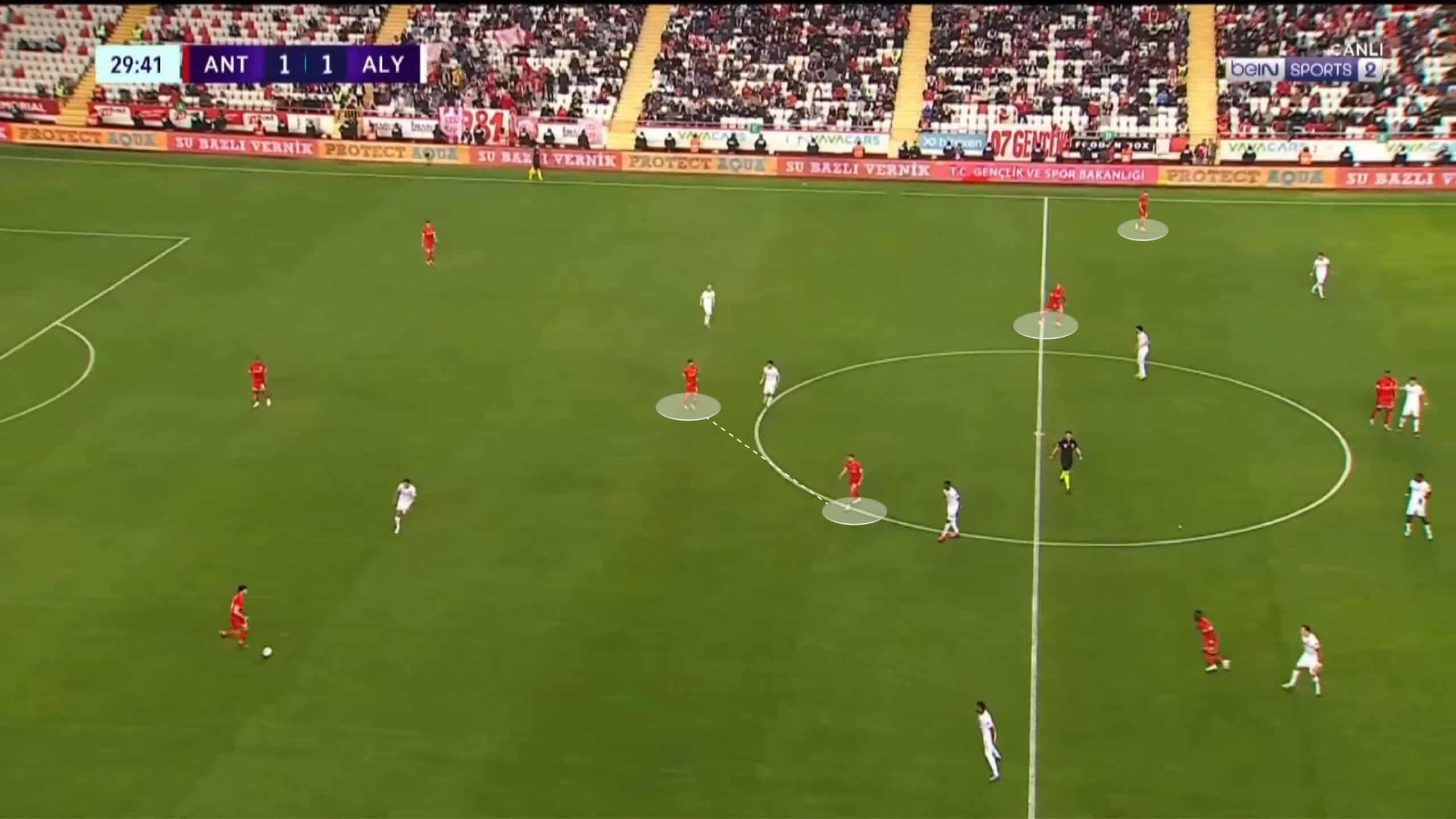
Concerning the front three elements, Larsson has some positional freedom but generally, in possession, plays as an inside winger and occupies the spaces between the lines for the most part.
Ndao has a similar positioning as an inside forward on the right side of the pitch, however, he tends to fix his positioning and rarely explores other zones of the field.
The striker, a role usually played by Haji Wright, positions on the opponent’s defensive line, looking to attack the depth or to play with his back turned to the goal.
As we developed in some previous articles, mobility can be a very important tool to misguide opponents’ pressing plan, and Nuri Şahin seems not to discard this idea.
As a matter of fact, the three players up top are in constant mobility and we can see Larsson, in some moments performing as a striker and Haji as a winger.
However, the Turkish side is also able to perform a different and less fluid strategy: a more direct approach, where in this case, the fullbacks support the backline on the build-up, forming a 4-4-2 line-up. Fernando gives his contribution by having a more intervenient role as a supporting midfield right next to Akyol.
The wingers balance their position between the midfield and attack zone, in accordance with the phase of the game Antalyaspor are in.
For instance, during construction, the wingers act as side midfielders, while in more advanced areas, they join the attack.
As for the two elements of the attack, Larsson plays behind Haji where he can be useful in supporting and making key passes in the final third.
Haji has a strong aerial game and can be very useful not only when the team choose this more direct approach, but also in crossing scenarios.
Nuri Şahin High Pressing & Its Consequences
Although it can depend from game to game, Antalyaspor’s defensive tactics are characterised by a high block and intense pressing.
This Turkish side intends to obstruct the opposition’s build-up, in order to re-establish their game model in possession.
Another aspect that we found relevant to mention is related to the use of pressing indicators such as aerial balls, poor passes and bad receptions, which ease up their task.
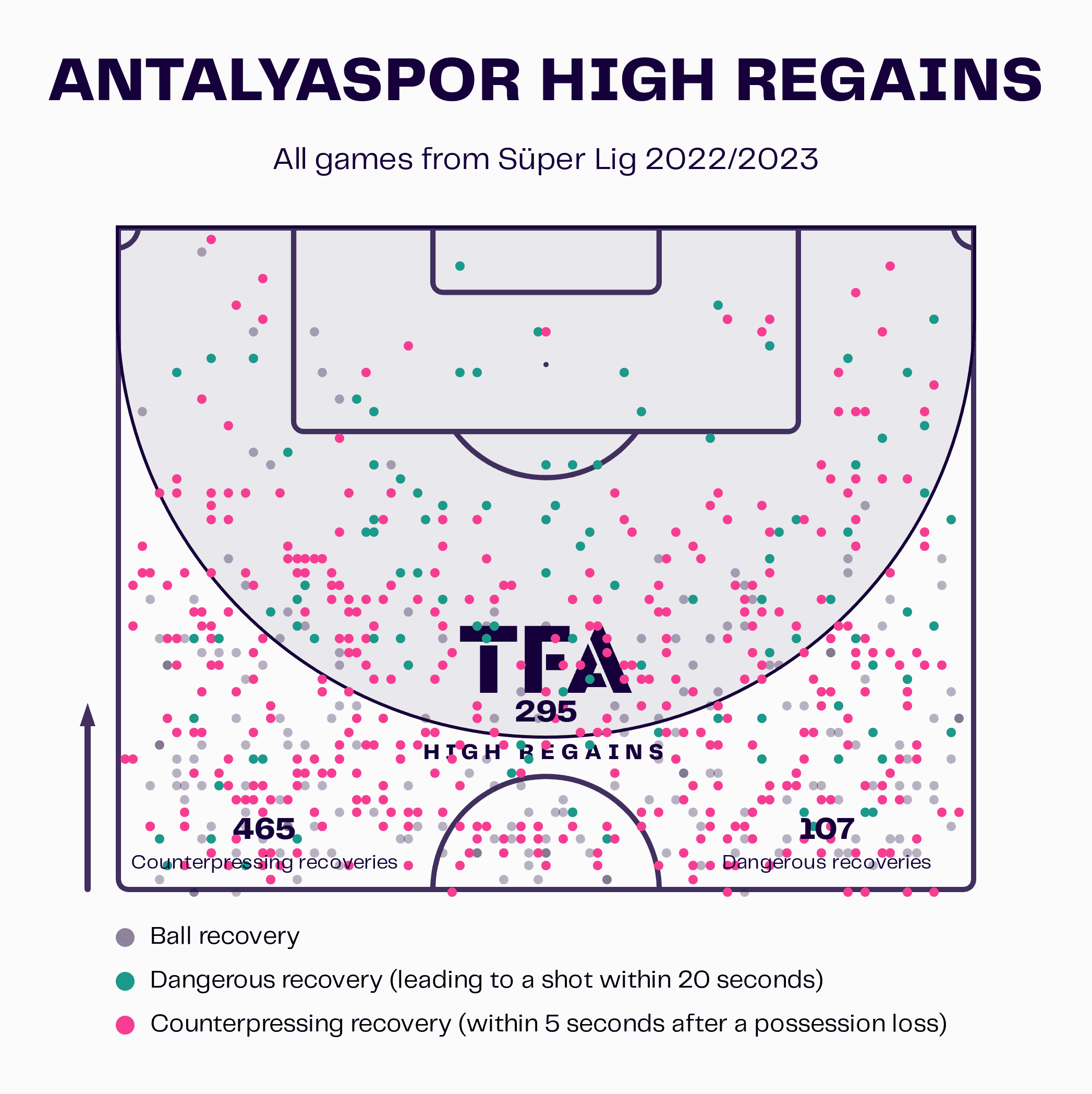
Initially, the team is positioned in the typical 4-2-3-1, with Larsson closing a pass line inside and Wright pressing the ball carrier (one of the centre-backs) or vice-versa.
However, there is a moment, related to Larsson’s positioning, which intensifies and uprises their pressing block, switching it to a 4-2-4.
That moment is when the 30-year-old Scandinavian presses the centre-back who has the ball in his possession and suddenly the two midfielders short distances between the attack and midfield.
However, it is important to say that this kind of pressing strategy depends from match to match as there are situations where Nuri Şahin chose not to expose his team to such high block pressing.
For example, in this game against Trabzonspor, the Antalya collective pressed in a 4-2-3-1, where the offensive midfielder marked the opposition’s defensive midfielder and did not press the centre-back in possession.
Instead, the wingers divided their pressing between the fullback and the centre-back. More specifically, whenever the opposition turned their possession from one side to the other, that’s when the winger pressed the ball carrier.
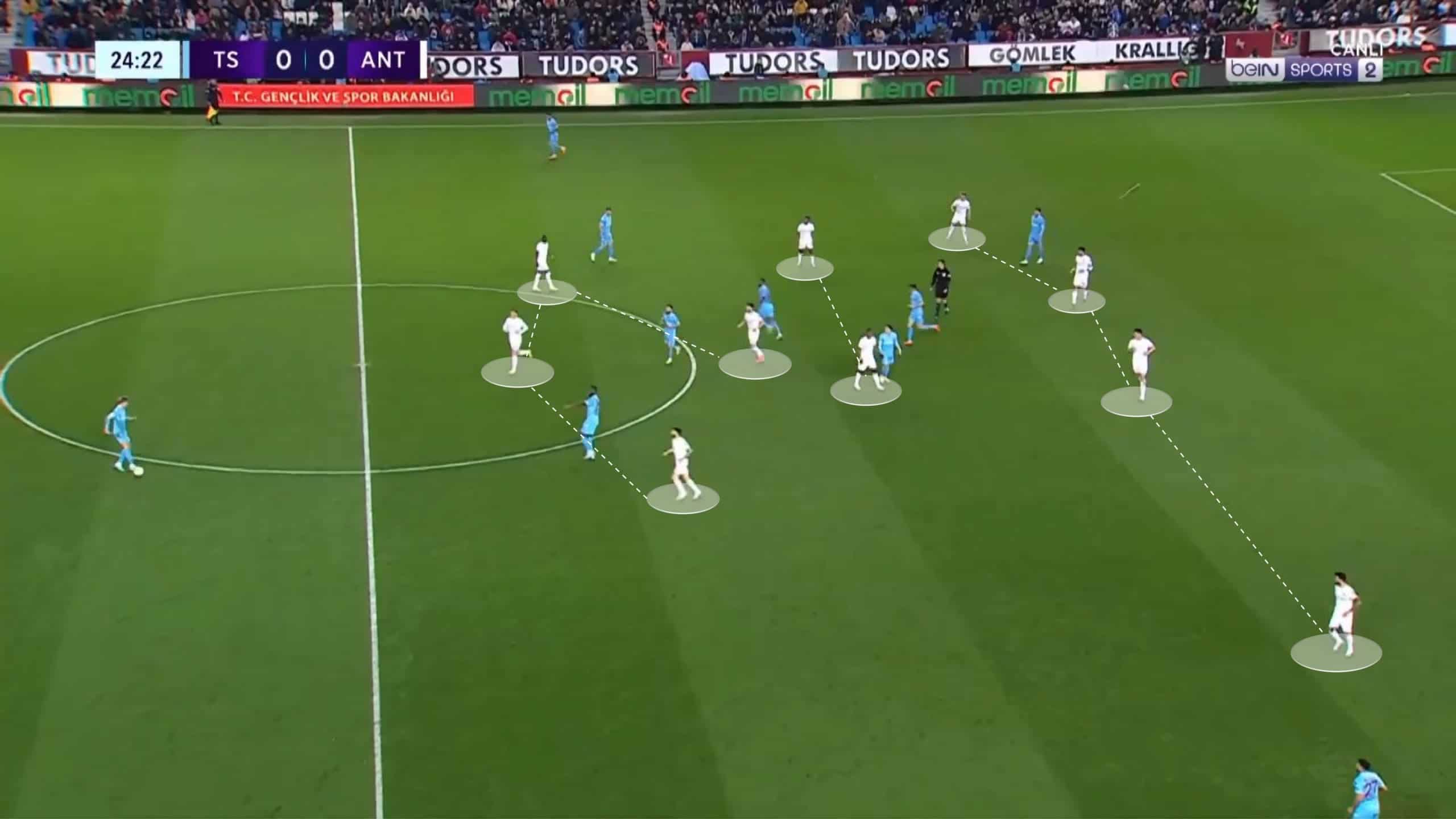
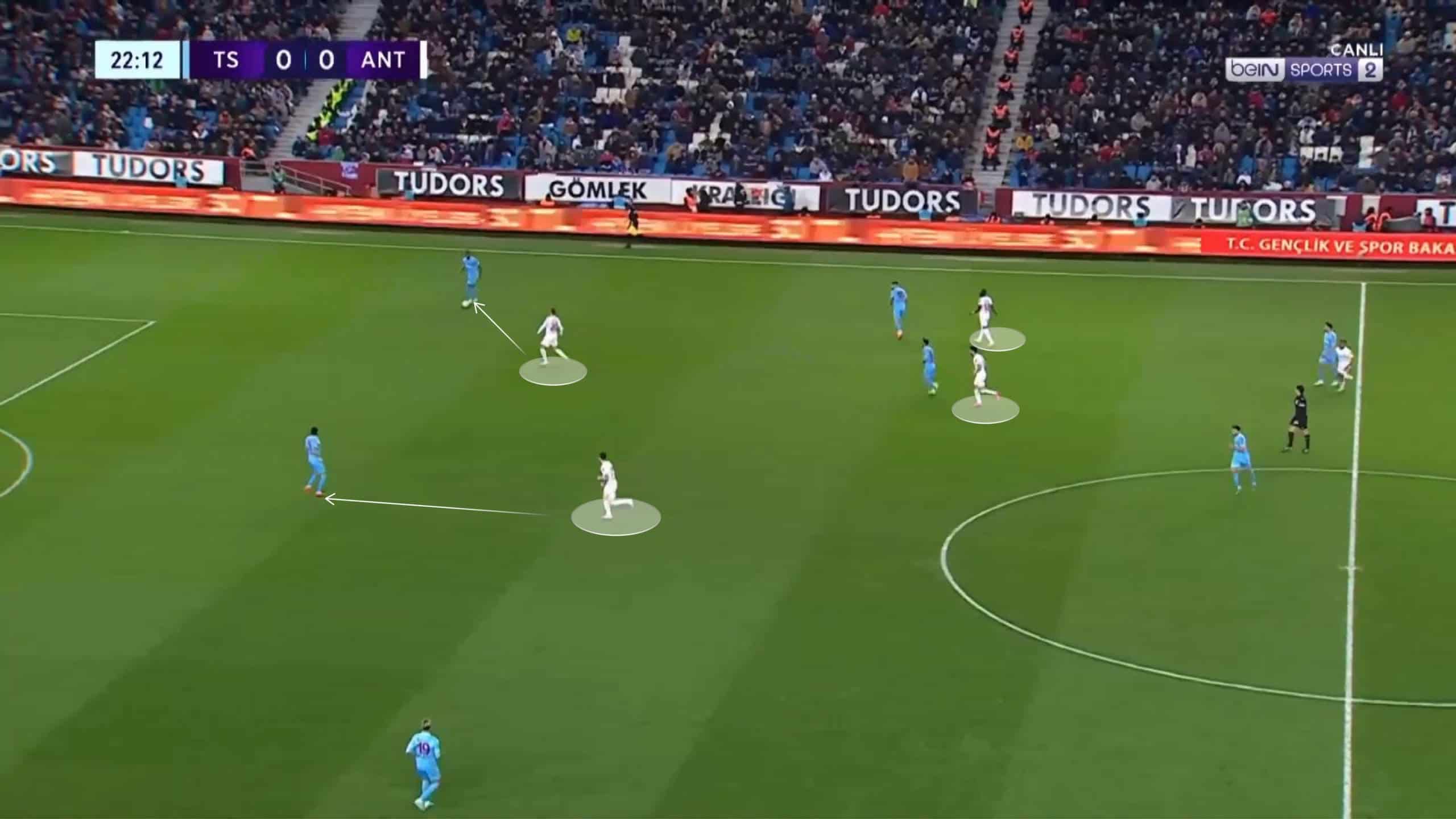
However, this kind of strategy has its risks associated such as the space created between the lines due to the offside rule, which prohibits the defenders from keeping up with their midfield line.
Because of this, Şahin’s side plays with only two midfielders in this phase of the game.
This space can also be explained by the numeric inferiority if the opposition is playing with three players in that zone.
With that said, if the opposition is somehow successful in their build-up, then Antalyaspor faces a dangerous attack and has to make some adjustments like, for instance, the wingers dropping down to help the fullbacks defensively.
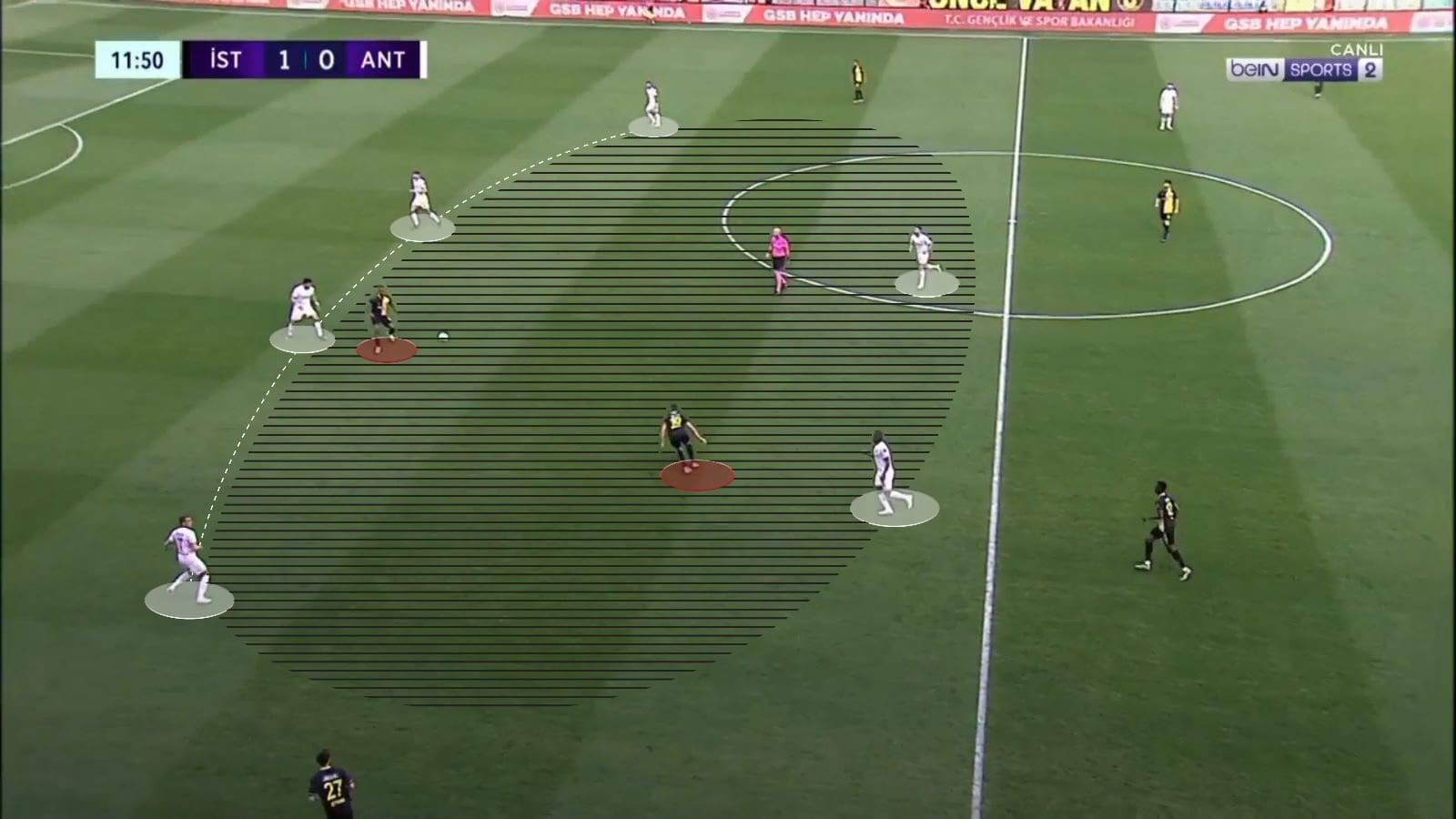
Furthermore, when the opponent is in a crossing zone, Antalyaspor still maintains the 4-4-2 formation, which shows tactical consistency and cohesion.
However, as we see, there were situations in which at least one of the midfielders should have moved into the defensive line in order to go against the numerical equality or inferiority inside the box.
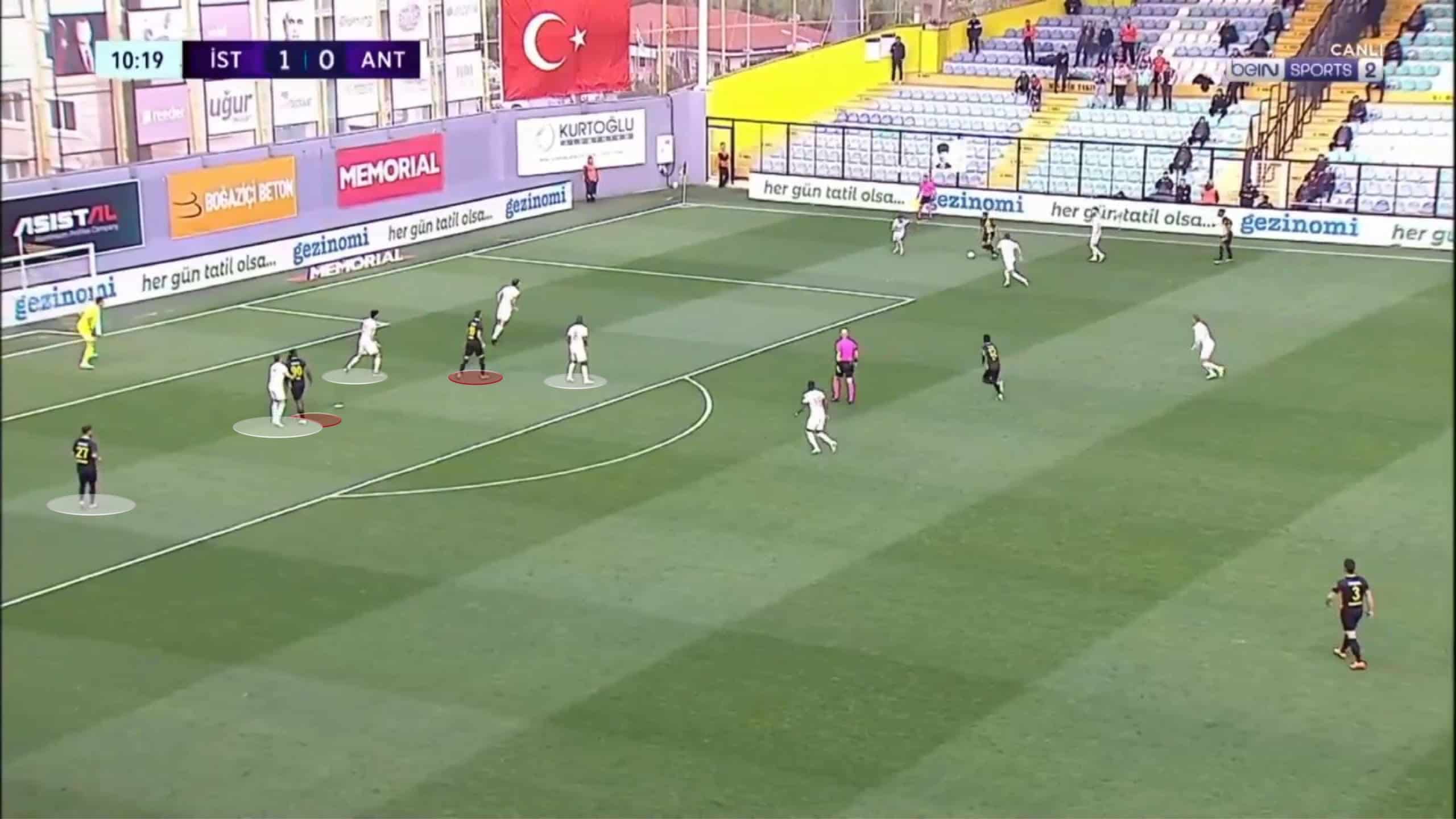
Nuri Şahin Transitions
As we mentioned before, Antalyaspor is a team that likes to play in possession and especially with a three-man build-up, their players use the maximum width and depth of the field.
With that said, this Turkish side is more exposed to some opposition’s counterattacks, and in this way, it needs confidence and quality in order not to lose possession.
The Antalya collective are very intense and aggressive in reacting after the loss of possession, with immediately a lot of players surrounding the ball carrier.
Although this overload is positive to re-establish their possession, it becomes negative if the opposite team successfully hits a counterattack due to space and inferiority on the other flank.
In the below images, we can see that a failed defensive transition led to a counterattack which was converted into a goal.
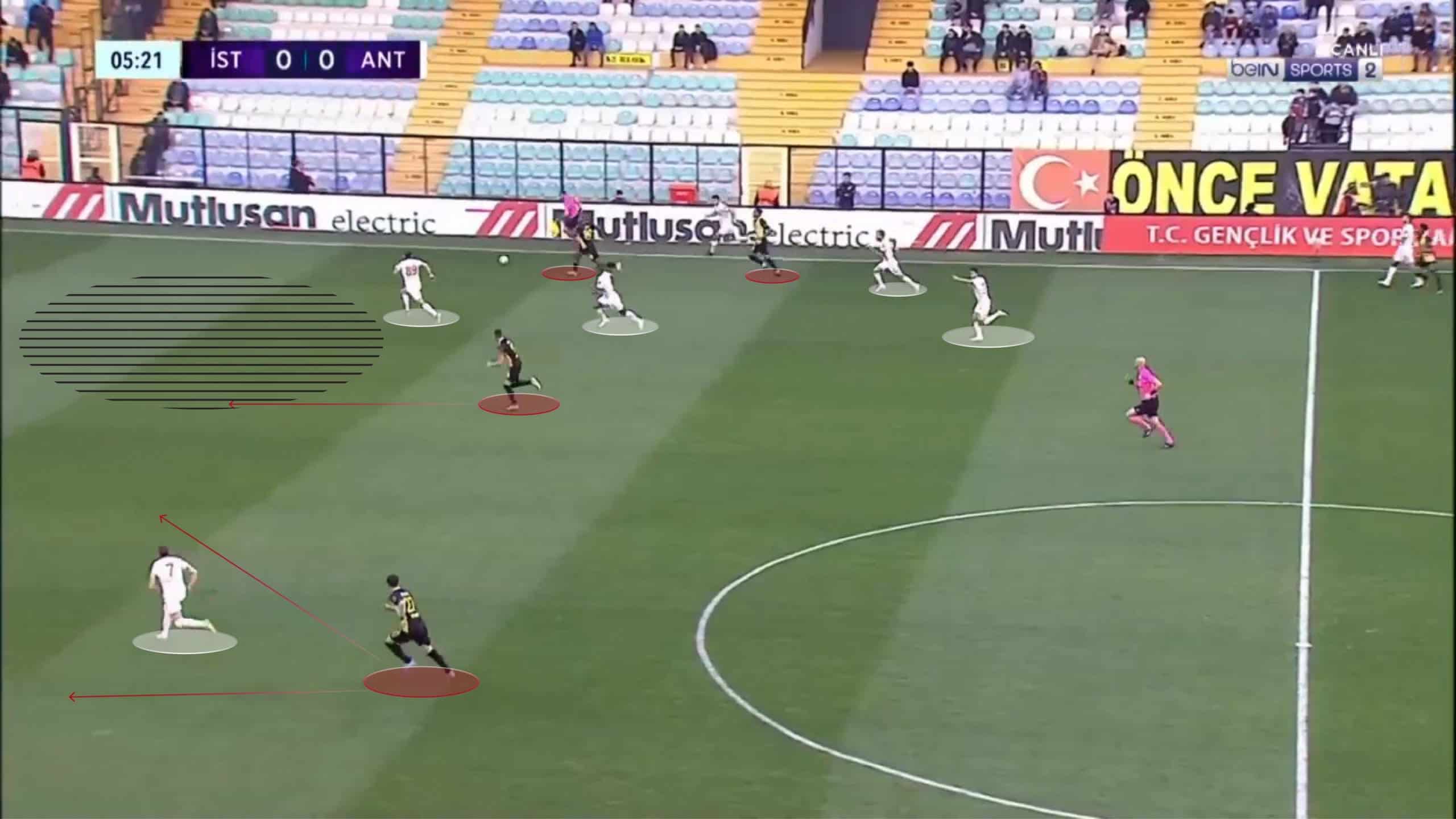
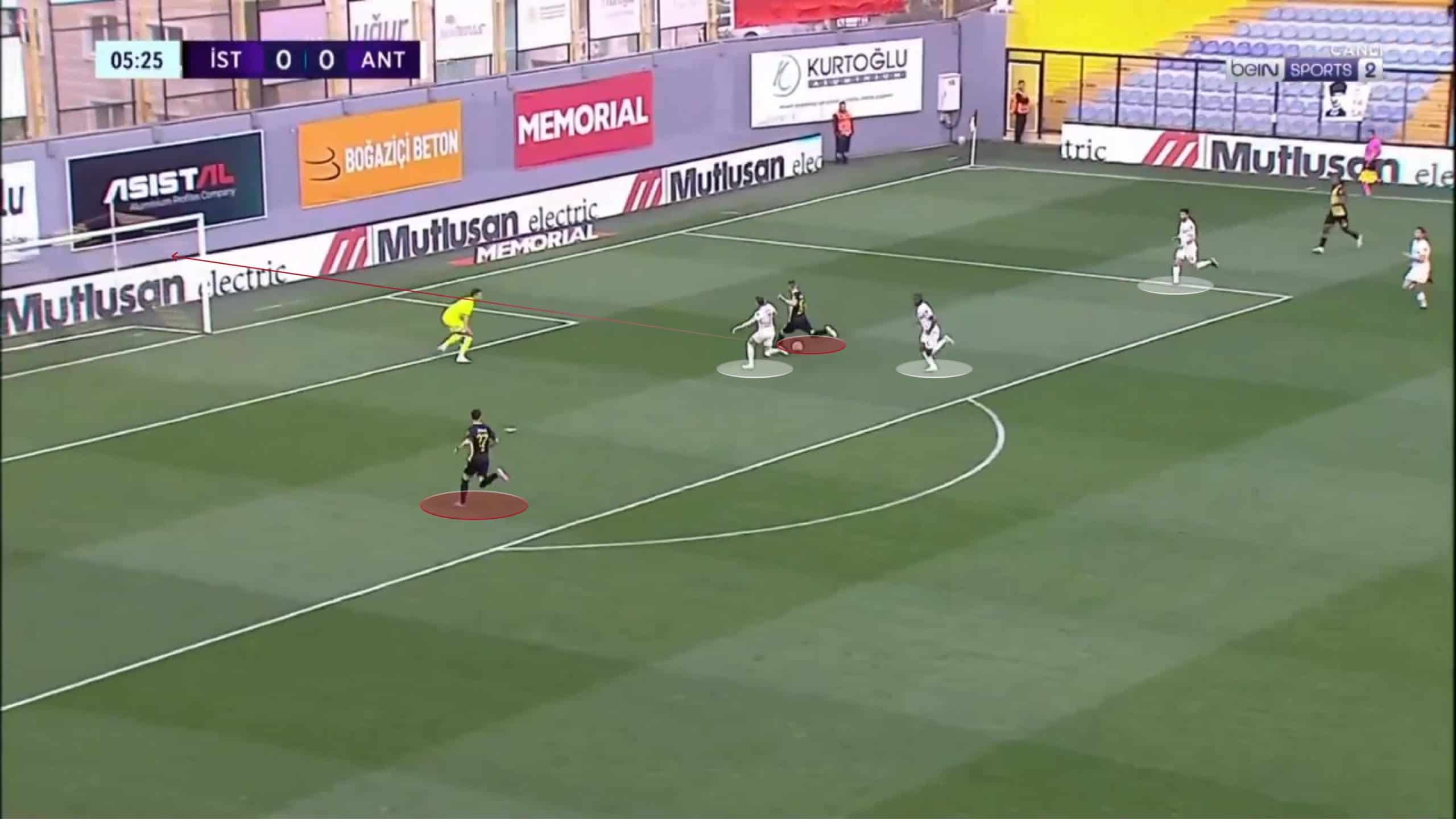
Nuri Şahin Set Pieces
Let’s now have a look at Antalyaspor’s set pieces and the team’s set-up both offensively and defensively.
Besides the impact that the Brazilian midfielder, Fernando, has in the offensive organisation, he is also decisive in set pieces, especially in offensive terms, taking the corners and free kicks.
He is very dangerous in taking free kicks right from the edge of the box with good accuracy and power.
In the corner, Nuri Şahin positions his players in the following manner: one player (generally Alassane Ndao) in the goal area waiting for the timing to attack the far post, five players on the penalty spot ready to attack both the near post and the middle of the goal, and finally two players outside the box.
Additionally, if Fernando decides to take the short corner, Ndao is the man who approximates and the space in the goal area is not occupied anymore.
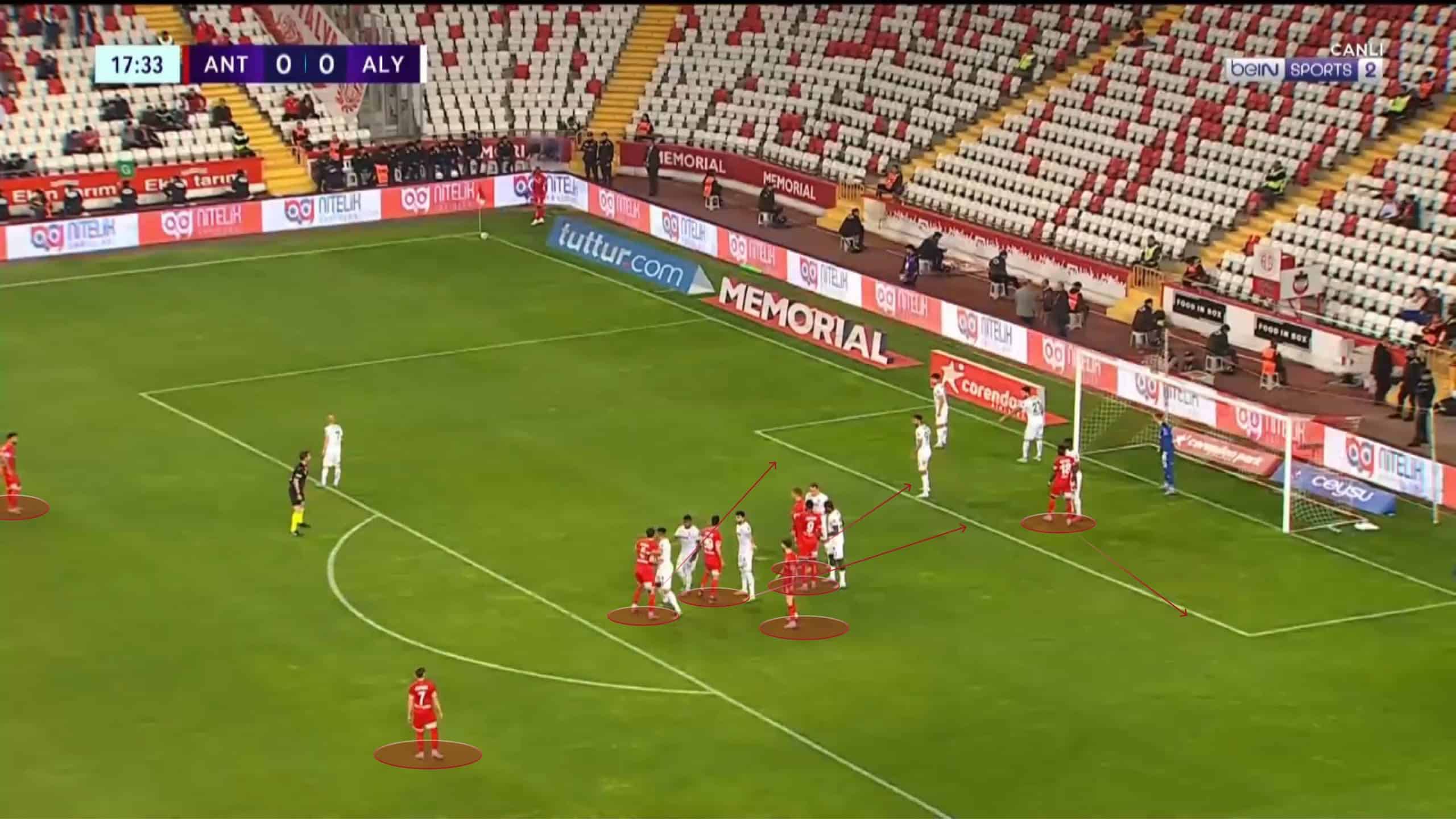
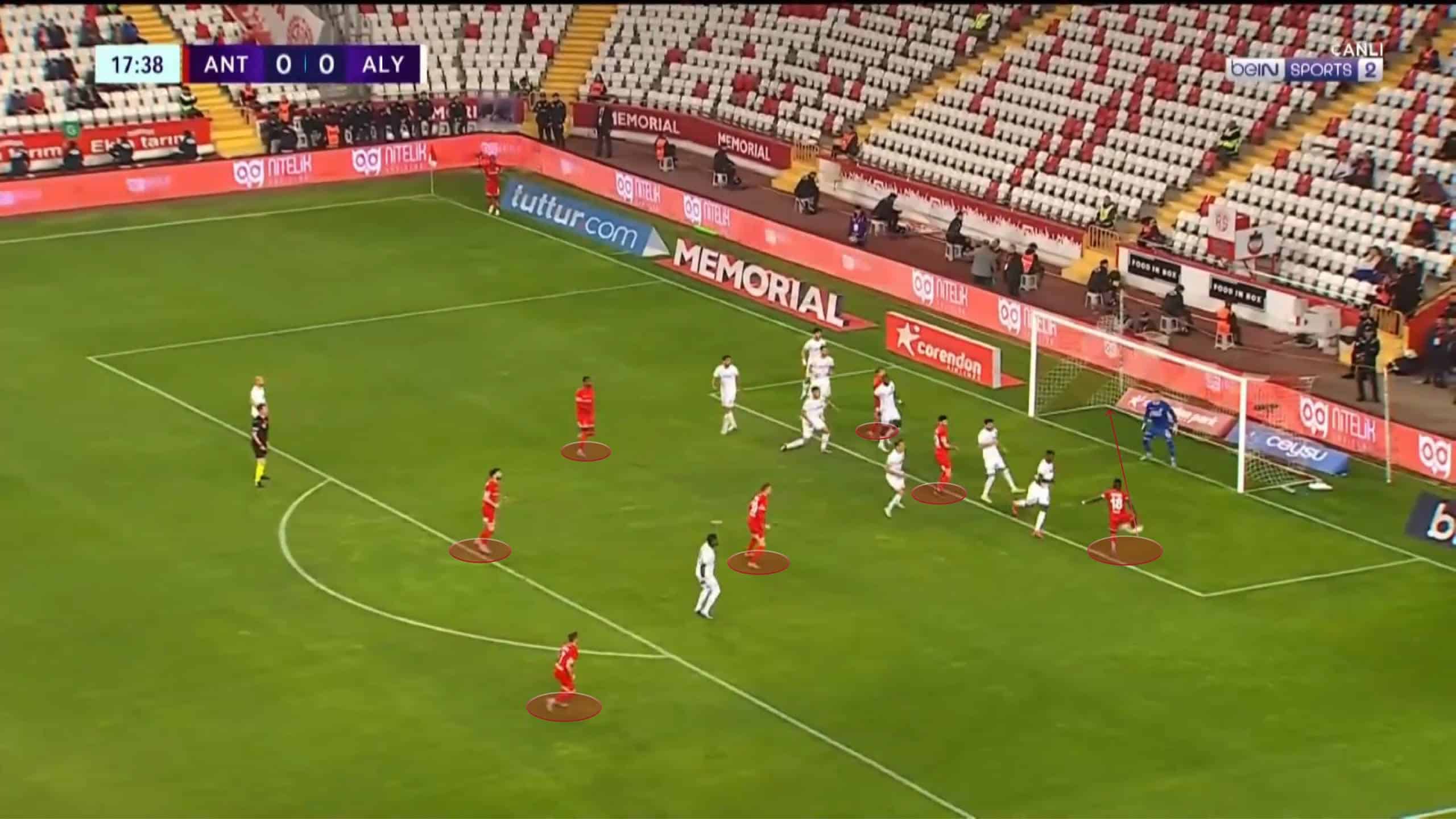
Defensively, Antalyaspor follows mainly a man-marking approach with just three players doing a zonal marking role at the near post, but always with the awareness of what is happening on their back.
Conclusion
Despite some inconsistent results, Antalyaspor is a team that has a possession identity and that tries, with some adjustments, to put it into practice no matter what team is playing on the other side.
Besides that, they are also a mobile group, especially on the left flank where there are interesting dynamics between Larsson, Vural and Sinik, creating even more space to play.
In addition, they are a very high and intense pressing team, with the main goal of impeding the other side’s build-up and re-establishing their possession.
However, as aforementioned, there are some risks associated with this approach such as the free space on the opposite flank or even space between the lines opening up.
If Antalyaspor adjusts these and some other small issues, they can improve in a substantial way defensively and consequently suffer even fewer goals.
Offensively, we believe that they are on the right track due to the consistency of the way they play in the organisation.
Again, this piece corresponds to an Nuri Şahin analysis of the general tactical panorama of Antalyaspor.
However, from game to game, Şahin made some adjustments.






Comments